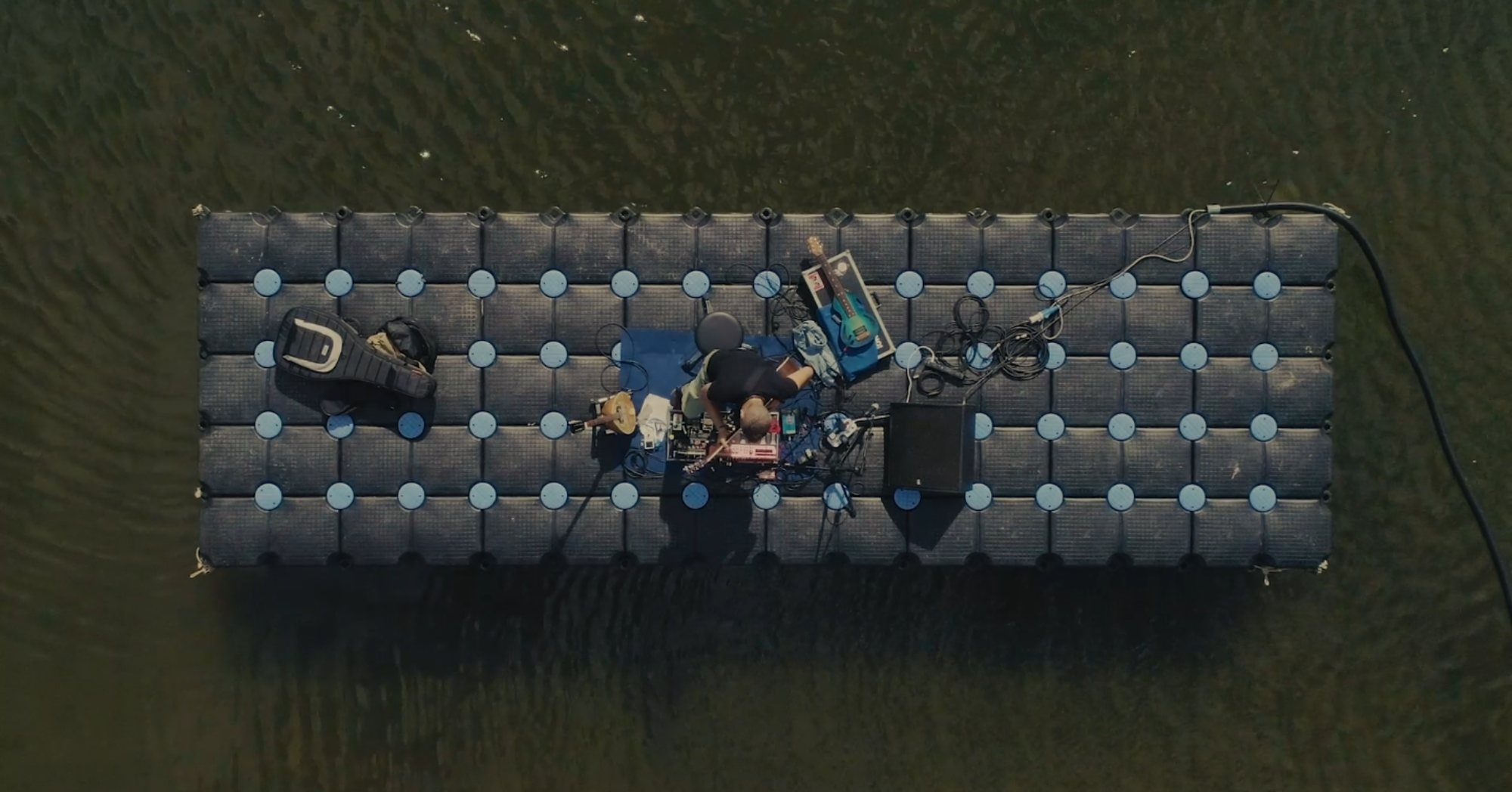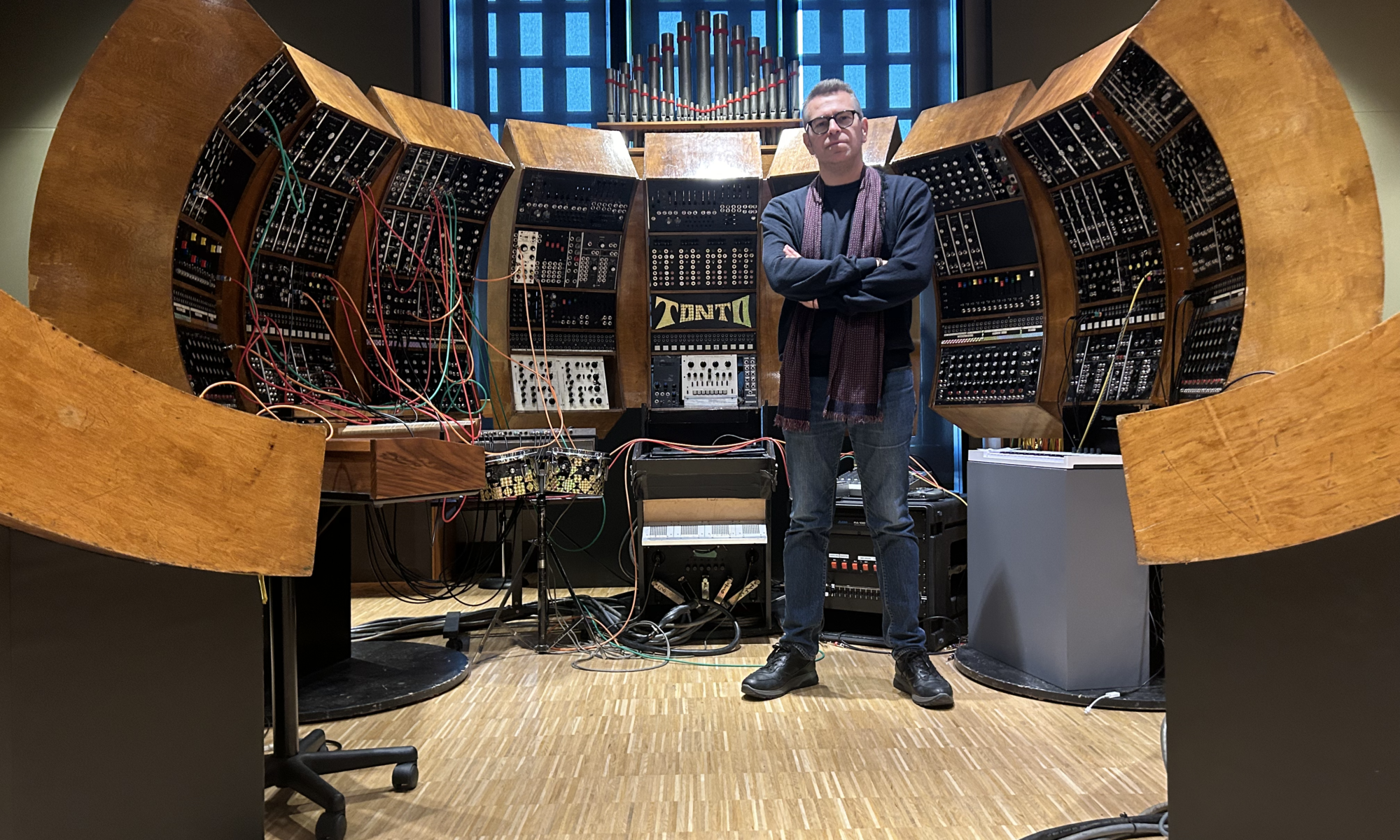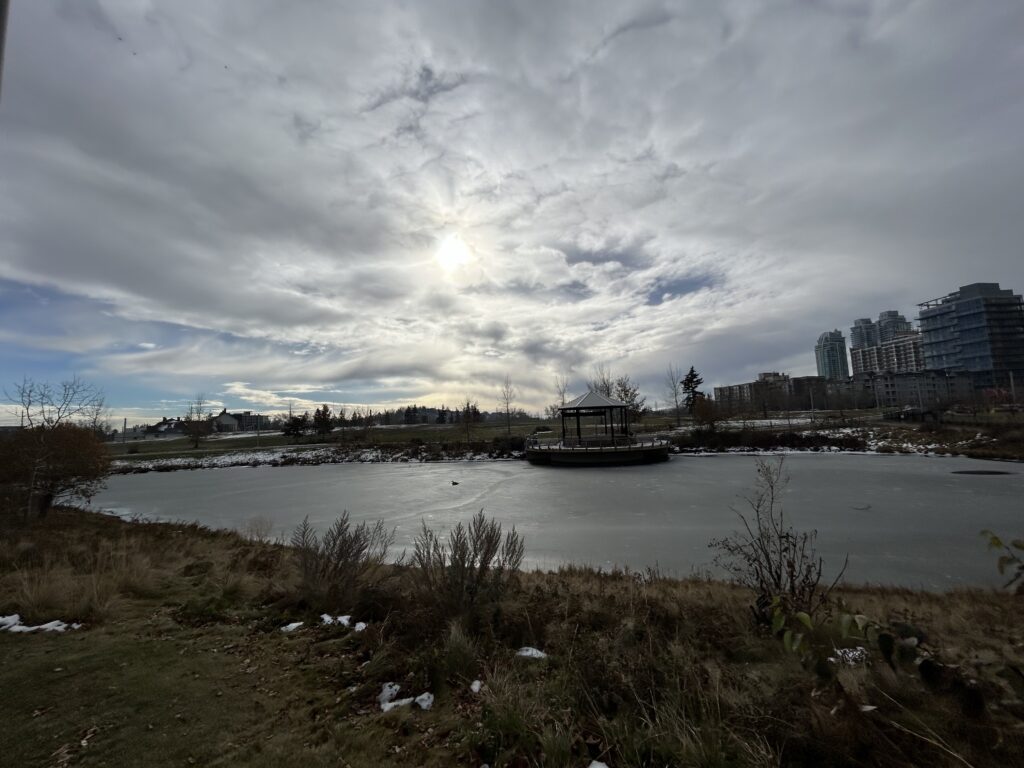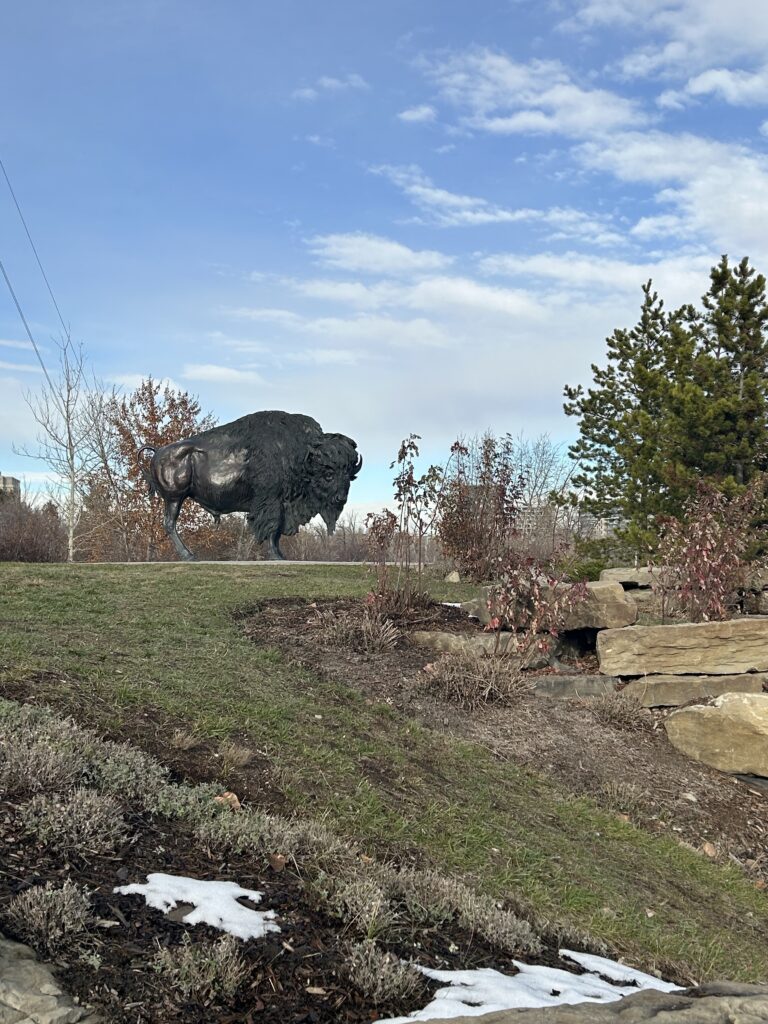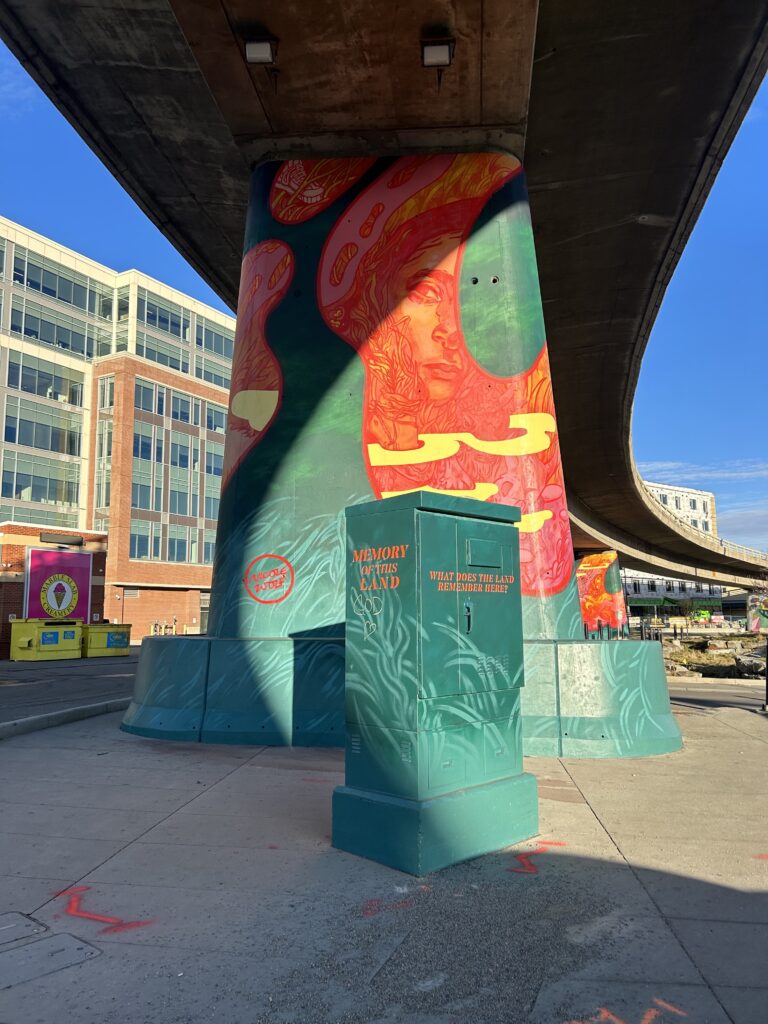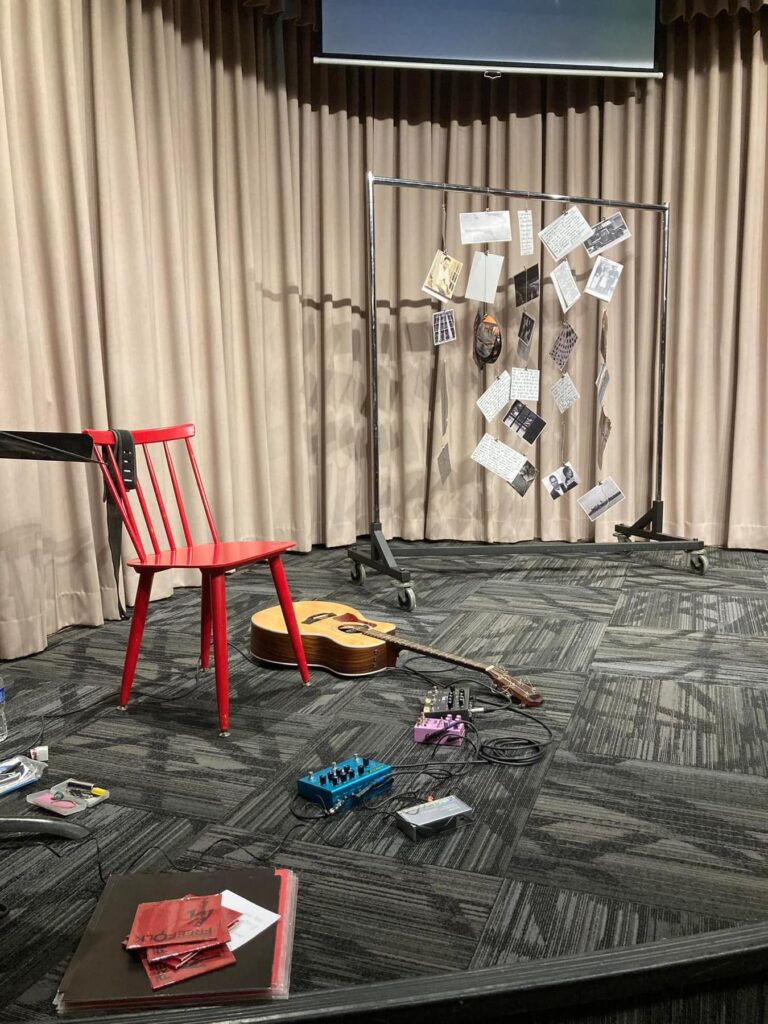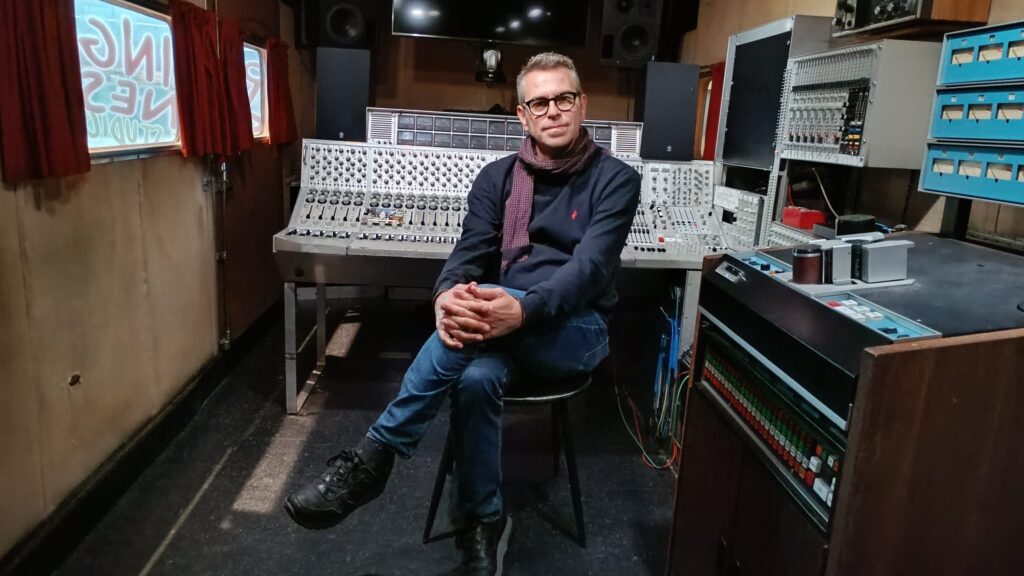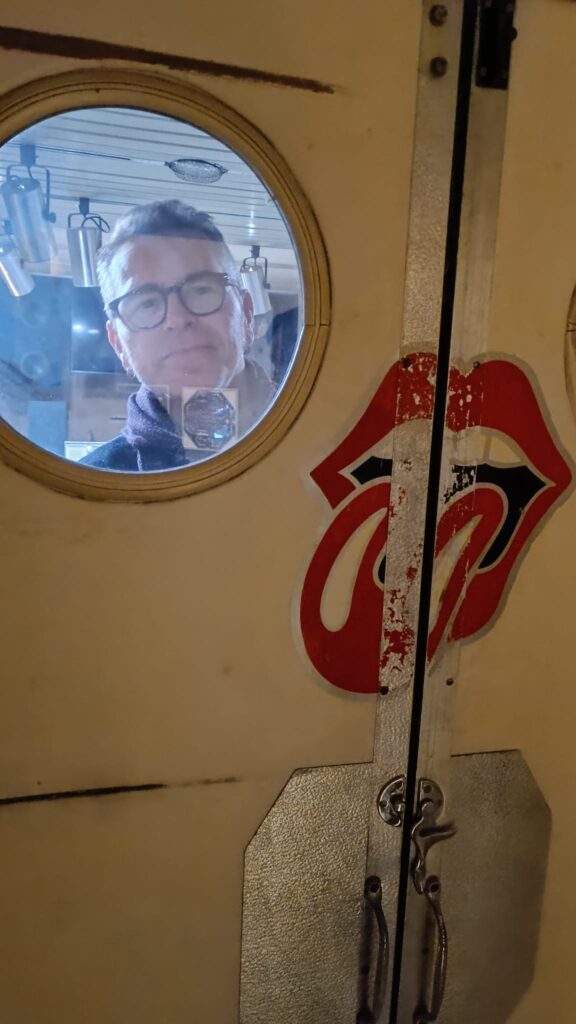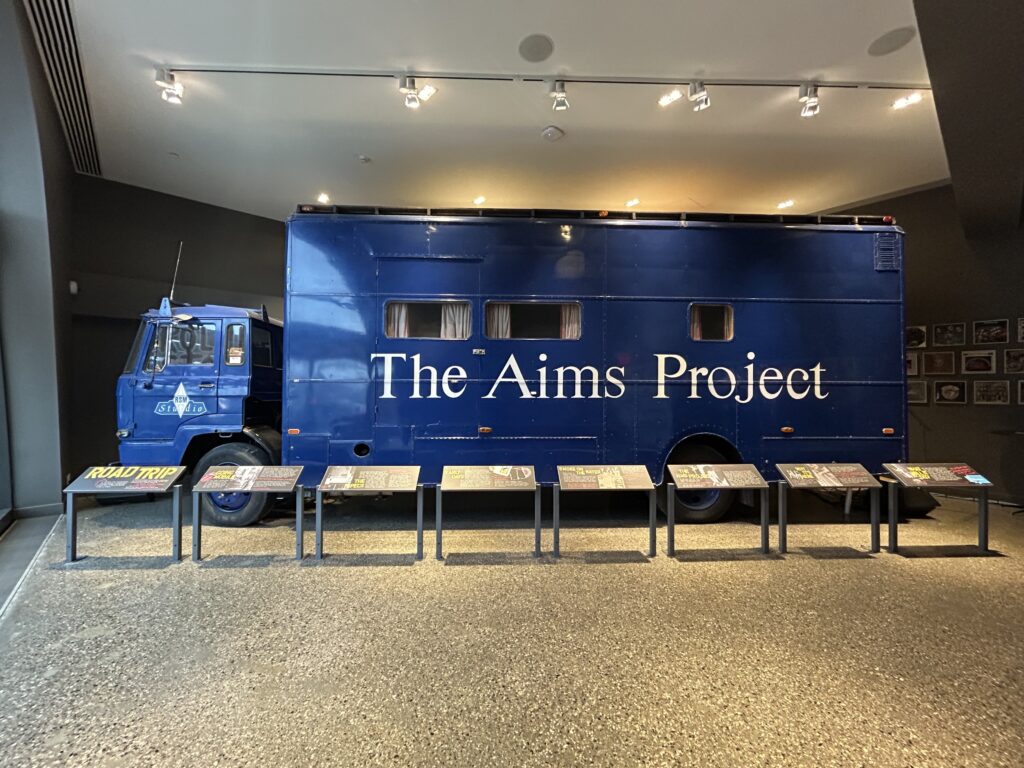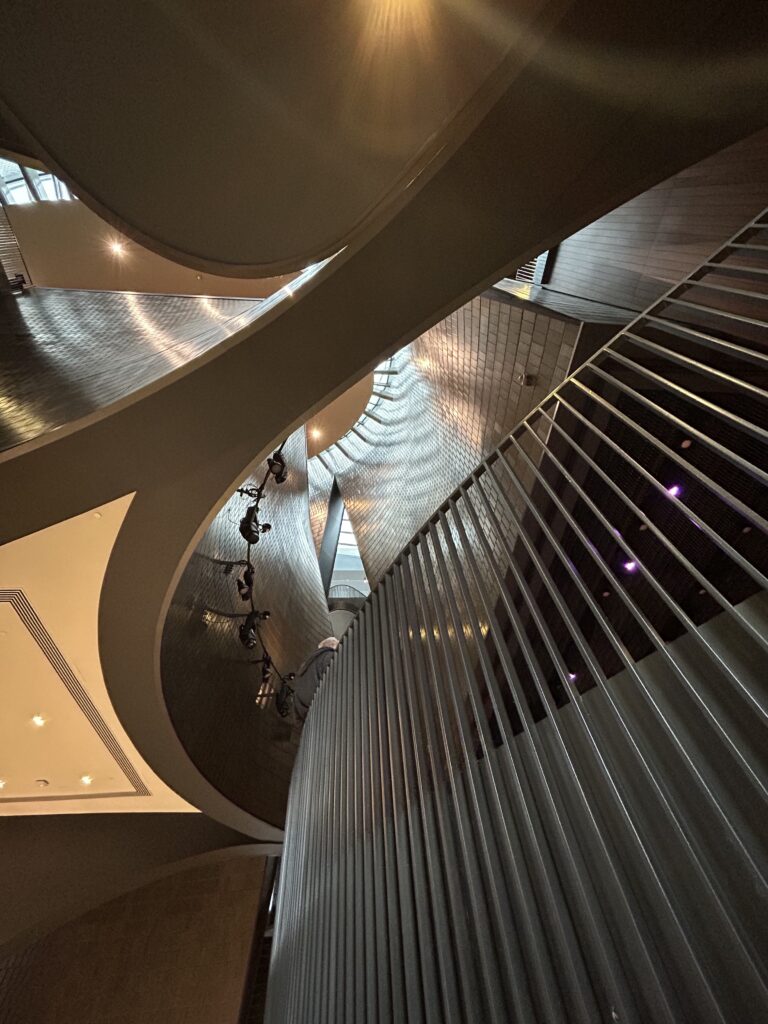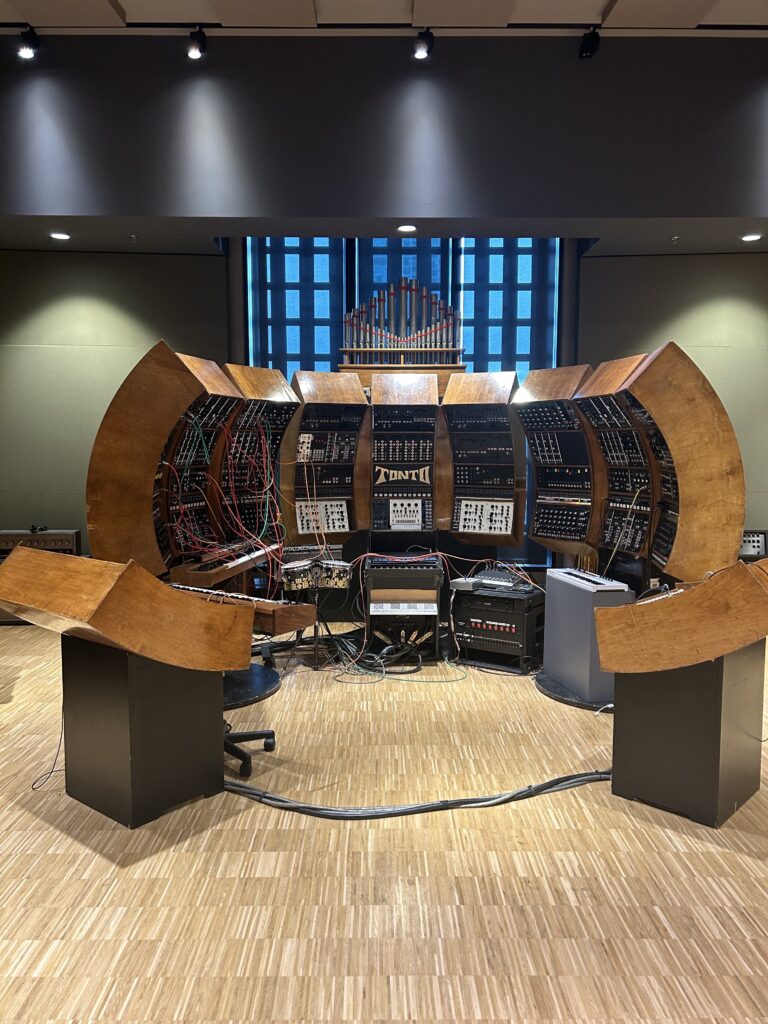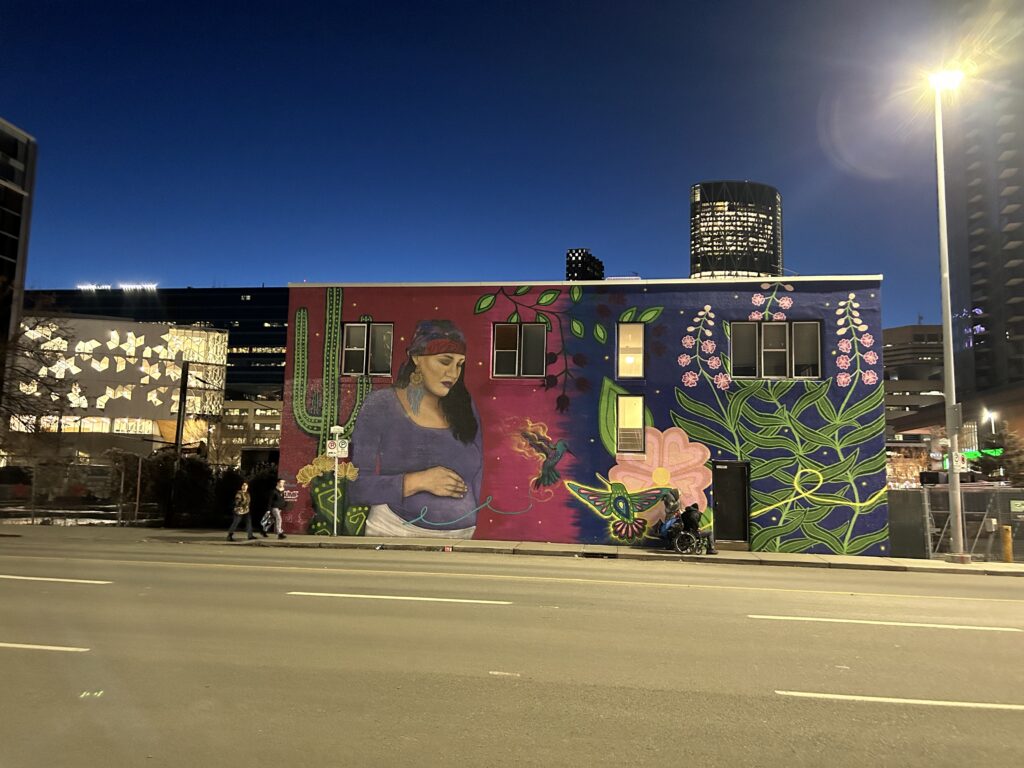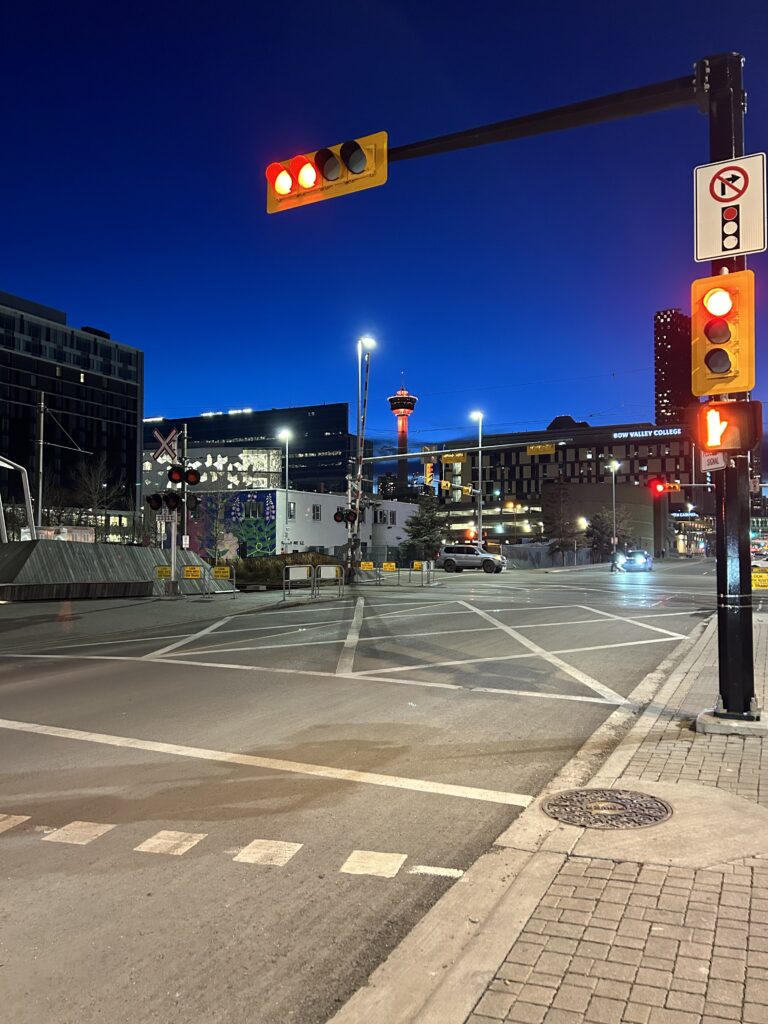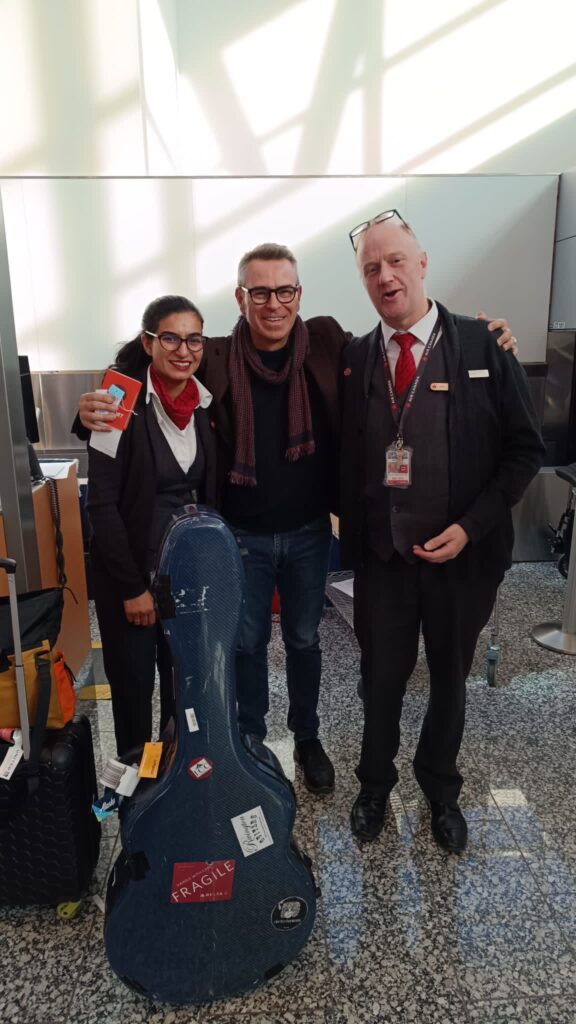Calgary, Nov. 02-06, 2023
🇮🇹 “Canadà”!!!
Riecheggia nella mia mente l’esclamazione pronunciata da Heinmont Tooyalakekt in “Indians” pellicola del 1975. È un ricordo lontano il mio e potrebbe essere impreciso. In quel film che vedevo con mio padre forse il capo della tribù dei Nasi Forati non l’ha detto. Nella realtà Capo Giuseppe non arrivò mai in Canada e morì in una riserva sul territorio statunitense.
Noi invece atterriamo a Calgary in una sera grigia, non fredda come le previsioni che circolavano nella compagnia. Scopriremo che si, le temperature non sono quelle della California appena lasciata ma decisamente meno rigide di come ci aspettavamo. Poi, per uno di San Fili come me, cosa vuoi che sia.
All’arrivo sono l’unico che sceglie di rimanere in camera. A cena, passeggiata notturna e primi drink preferisco un bagno caldo nel silenzio della stanza doppia che condividerò con Ernesto. Stavolta, finalmente, i letti sono due. Stop al matrimoniale con barriera divisoria di cuscini eretta dal mio collega in quel di San Diego e Santa Rosa. L’attesa di poter finalmente dormire un’intera notte resterà però disattesa.
Erano anni che non mettevo piede sul territorio canadese. L’ultima volta credo sia stata nel secolo scorso e sempre nell’Ontario dai miei zii e cugini. Avrei voglia di rivederli ma le distanze non lo consentono. Stavolta siamo nello stato dell’Alberta. Calgary è una ricca cittadina “buona per viverci ma meno attraente come luogo di vacanza” mi diranno alcuni giorni dopo gli amici che incontreremo nei giorni a venire, dopo gli spettacoli.
Siamo alloggiati nella zona sud/est, quella che scopriremo essere area sulla quale si sta investendo dal punto di vista culturale.
A due passi dall’hotel, infatti, è situato lo Studio Bell il museo della storia musicale canadese che rappresenta culturalmente il fiore all’occhiello dell’intero Stato e rappresenterà per me ed Ern, credo, la degna e sorprendente chiusura di un viaggio entusiasmante e denso.
La prima mattina a Calgary il freddo pungente si fa sentire. Su suggerimento di Luigi Audia, il presidente del CICC – Calgary Italian Cultural Centre – che ospiterà i nostri spettacoli, attraversiamo il ponte sul fiume Elbow e visitiamo Inglewood il quartiere più antico della città, oggi sede di negozi vintage e luoghi dove si tengono spettacoli e concerti. Qui è situato il Garry Theater che scoprirò essere stato costruito in ricordo di un mio antenato molto vicino agli indigeni Blackfoot. Qui c’è, recita l’insegna sulla porta, il più fornito negozio di dischi del Canada. Effettivamente, varcata la soglia si viene risucchiati in uno stretto labirinto fatto di scatole e scaffali alti fino al soffitto pieni di vinili e cd. Di tutti i generi. Chiedo Psychedelic Pills dell’autctono Young ma senza risultato.
Torniamo indietro attraversando quello che un tempo fu il territorio delle First Nations di nativi, poi divenuto Fort Calgary. Ricordato ora da una serie di cartelli e incisioni sul legno riportanti date e particolarità. Ho realizzato in questo viaggio quanto i nordamericani ma non solo loro devo dire, siano attenti a tutto ciò che rappresenta la loro storia. Fosse anche una semplice pietra la evidenziano con targa, illuminazione e descrizioni dettagliate. L’esatto contrario di ciò che accade da noi in Italia dove tesori a cielo aperto spesso sono lasciati all’incuria.
Il primo degli spettacoli al CICC sarà quello di Marco Simeoli e prima dell’inizio siamo invitati a pranzo nel ristorante situato al piano terra della struttura che ospita la sede del Centro culturale. “La Cantina” è un ristorante italiano la cui qualità mi sbalordisce. Ordino un brodo con verdure e pasta fatta in casa, delle polpette e un vitello ai funghi. Dopo aver assaggiato le polpette mi rivolgo agli amici canadesi ponendo una domanda affermativa “il cuoco è italiano”.
No, è la risposta. Chris è originario del Saskatchewan, provincia del Canada centrale.
Non ci credo. Lo chiamano.
È risaputa la mia ritrosia nel mangiare cibo italiano all’estero ma qua sembra essere a casa. Anzi nelle migliori e più tradizionali case per quanto riguarda i sapori. Modernità e tradizione. Gli esterno i miei calorosissimi complimenti e gli chiedo una foto.
Qualità che si stenta a ritrovare finanche in alcuni ristoranti calabri.
A fine spettacolo veniamo introdotti da Laura quali artisti del prossimo show che si terrà nei giorni a venire. Chiacchieriamo con il pubblico. Facciamo la conoscenza di svariati italo-canadesi. A Calgary le comunità più numerose di italo-canadesi sono abruzzesi e calabresi. Come Rosanna, insegnante originaria, come molti, di San Giovanni in Fiore (Cs), che si rivelerà fondamentale il giorno successivo quando andremo a visitare il museo musicale.
Il programma del secondo giorno prevede trasferta nella “vicina” Lethbridge dove ad attenderci ci sarà una nutrita comunità veneta.
Io anticipo che non andrò. Un forte mal di schiena mi sta accompagnando da San Diego e l’idea di rimaner seduto in auto per 5 ore complessive non mi alletta. In vista anche del lungo volo di ritorno preferisco visitare la città. Alla fine anche Ernesto decide di restare con me. Si va allo Studio Bell dove apprendiamo che il nipote di Rosanna è un responsabile degli eventi artistici che si tengono all’Home of The National Music Centre e lo troviamo ad attenderci nella Hall.
Le visite nei musei sono sempre arricchimenti, ancor di più quando si ha una guida, reale o virtuale, foriera di dettagli e indicazioni. Immaginate cosa possa essere una guida personale che ha visto nascer il museo, nel vero senso della parola. Si, perché Frank entrò qui da elettricista, tecnico con la passione della musica che dalla costruzione alla realizzazione finale ha assistito a tutti i passaggi evolutivi della struttura ospitante nei 5 piani la storia della musica canadese.
Sale che raccolgono strumenti donati, ad esempio il pianoforte da Elton John sul quale ha composto il materiale dei primi cinque dischi. Strumenti tipici e memorabilia rappresentative della cultura delle regioni canadesi. Prototipi di sintetizzatori e postazioni interattive con strumenti già collegati dove ognuno può intraprendere un percorso didattico in tempo reale.
L’architettura intera dello Studio Bell è l’elemento in più. Curato nei minimi dettagli con sinuose linee e materiali che consentono durante gli eventi musicali una diffusione acustica fruibile da qualsiasi punto e piano uno si trovi collocato.
Quando pensiamo alla musica, pop/rock in particolare, la nostra mente è rivolta al Regno Unito e agli States. Poi capita che te li ritrovi tutti lì in bella mostra nella Canadian Hall of Fame e realizzi che sono tanti: Joni e le copie autografe delle prime stampe, il giovane Neil, Leonard “i’m your man” Cohen, Glenn Gould con i guanti, Bruce Cockburn, Robbie Robertson, Celìne, Randy Bachman e l’intera collezione di chitarre costruite da liutai di tante parti del mondo, Alanis Morrisette… Leggi i nomi ed esclami: caspita anche lei, anche lui canadesi.
Saliamo all’ultimo piano. Il Solar Drones, un’installazione elettroacustica permanente di Patrick Marold è l’ultima cosa che vediamo del Museo prima che si venga introdotti nell’area riservata, inconsapevoli di quanto andremo a vedere di lì a poco.
I racconti dettagliati di Frank ci illustrano in primis la sede della scuola di musica spiegandoci che una delle attività peculiari dello Studio Bell consiste nella divulgazione della musica e nel provvedere ad avvicinare i più giovani e meno abbienti allo studio degli strumenti.
Poi ci spalanca le porte del “luna park”.
Studi di registrazioni e sale ripresa di svariate dimensioni, stanza degli amplificatori valvolari per chitarra elettrica e basso; sala dei sintetizzatori e tastiere elettroniche; piano rodhes, organi hammond, sequencer, clavicembali di varia dimensione e BOOM ecco a voi TONTO: il mega sintetizzatore polifonico. Un semicerchio di tasti bianche e neri, potenziometri, cavi colorati, saldature. WOW.
Basterebbe questo a lasciar di stucco ma all’uscita, piano zero dell’immobile, ci attende un’altra sorpresa: un camion blu. Non un normale truck bensì il Mobile Recording Truck fatto costruire dai Rolling Stones nel 1968 anche per sfuggire alla tassazione britannica. Nello studio sono passati tra gli altri i Deep Purple, gli Zep, Marley, oltre alle pietre rotolanti.
Ora è il mio turno, seppur non abbia registrato.
La visita è terminata. Ci concediamo da Frank che malgrado i molti impegni ha trovato il tempo di regalarci circa tre ore di unicità. Potere delle zie e della musica.
Grazie Frank, non lo dimenticherò. Ti aspetto al nostro spettacolo e al mio concerto, gli dico. Mi risponde che farà il possibile ma non garantisce per via di impegni con la famiglia. Capisco che non lo avrei rivisto.
E venne il giorno dello spettacolo. La sala è piena. Ernesto va che è una scheggia, emotivamente e gestualmente. Rapisce il pubblico che segue silenzioso e attento all’ultima replica della storia di Joe Zangara.
Dopo un’ora di spettacolo arriva il momento del mio set strumentale. Eseguo alcuni brani del mio disco Freefolk alternati da qualche simpatico aneddoto che il pubblico accoglie con risate.
Suono l’ultima nota, il riverbero è settato con un lungo decadimento, il suono svanisce lentamente. Titoli di coda.
Si torna a casa.
… … …
… … …
Ah: Sono stato felice di essermi sbagliato. Frank alla fine ce l’ha fatta a venire al nostro spettacolo. Gli ho regalato una copia del mio disco ringraziandolo nuovamente del suo tempo. Lui, ringraziando me e argomentando dettagliatamente circa la musica, mi ha messo una banconota da 50$ in mano e mi ha obbligato a vendergli alcune copie in cd perché teneva a diffondere la mia musica ad alcuni suoi colleghi musicisti. Soddisfazioni!
Extra Credits:
Dopo lo spettacolo di Marco ci hanno invitano in un bar. Il nome del locale, SS106, avrebbe dovuto fornirci qualche indizio ma siamo del tutto inconsapevoli di ciò che di lì a poco avremmo assistito: un altro momento topico di questo viaggio.
Mentre la tavolata formata da organizzatori, artisti, pubblico, amici canadesi sta banchettando, prende il via una rissa stile film con tavoli in aria, bottiglie spaccate in testa e un paio di feriti.
Lasciamo il locale incolumi tra l’imbarazzo degli ospitanti “veniamo spesso qui ma non è mai successo nulla del genere”. Li abbiamo prontamente tranquillizzati tentando di sminuire l’accaduto e dicendo loro che se chiami un locale in quel modo* è facile che prima o poi qualcosa accadrà.
*questa possono coglierla solo i calabresi
Director’s Cut:
Chi volesse apprendere l’ora di panico vissuta la mattina del rientro in Italia quando, giunti all’aeroporto di Calgary, un’assistente all’imbarco mi segnala che non avrebbero imbarcarti la mia chitarra perché “nothing appear on the reservation” può contattarmi in privato.
Tre congiunzioni favorevoli mi consentono di tornare con strumento al seguito:
1: Laura che appena atterrata al JFK di NY si mette al telefono con il Customer Assistant di Lufthansa;
2: Simon, collega della sgarbata assistente che mi bloccò senza palesare possibili soluzioni perché “it’s not up to me”, che per 45min al telefono cerca di risolvere il tutto, e ci riesce alla grande insieme ad un’altra sua collega;
3: la mia attitudine nell’arrivare in largo anticipo quando devo prendere un volo. Nonostante i miei compagni di viaggio dicano che sia esagerato.
Dura vita per i musicisti agl’imbarchi
LufthAnsia. Direi!!!
mg
🇨🇦 “Canada”!!!
The exclamation uttered by Heimont Tooyalakekt in the 1975 film “Indians” echoes in my mind. Mine is a distant memory, even an imprecise one. In that film saw with my father, perhaps the leader of the Nez Percee tribe didn’t say it. In reality Chief Joseph never arrived in Canada, dying in an American reserve. We, however, land in Calgary on a gray evening, not as cold as the forecasts that were circulating in the company. We will discover that yes, the temperatures are not those of California we just left but less cold than we expected. For someone from San Fili like me, what do you want it to be. Upon arrival I am the only one who chooses to stay in the room. For dinner, a night walk and the first drinks I prefer a hot bath in the silence of the double room that I will share with Ernesto. This time, finally, there are two beds. Stop the double bed with dividing barrier of cushions erected by my colleague in San Diego and Santa Rosa.
Last time i came in Canada was in the last century and always in Ontario. Came to visit my uncles and cousins. I would like to see them again but too far from here. This time we are in the state of Alberta. Calgary is a rich town “good to live in but less attractive as a vacation spot” the friends we meet after the shows will tell me a few days later. We are staying in the south/east area, which we will discover is an area in which investments are being made from a cultural point of view. A stone’s throw from the hotel, in fact, is the Studio Bell, the museum of Canadian musical history which culturally represents the flagship of the entire state and will represent for me and Era, I believe, the worthy and surprising end of an exciting journey and dense.
The first morning in Calgary the bitter cold is felt. At the suggestion of Luigi Audia, the president of the CICC – Calgary Italian Cultural Center – which will host our shows, we cross the bridge over the Elbow River and visit Inglewood, the oldest neighborhood in the city, today home to vintage shops and places where shows and concerts. Here is located the Garry Theater which i will discover was built in memory of an ancestor of mine who was very close to the Blackfoot indigenous people. Here is, says the sign on the door, the best-stocked record store in Canada. Indeed, once you cross the threshold you are sucked into a narrow labyrinth made of boxes and shelves high up to the ceiling full of vinyl records and CDs. Of all kinds. I ask for Psychedelic Pills by the native Young but to no avail. We go back through what was once the territory of the native First Nations, which later became Fort Calgary. Now remembered by a series of signs and wood engravings reporting dates and particularities.
On this trip i’ve realized how much North Americans, but not only them i must say, pay attention to what their history represents. Even if it were a simple stone, they highlight it with a plaque, lighting and detailed descriptions. The opposite of what happens here in Italy where open-air treasures are often left to neglect.
The first of the shows at the CICC will be that of Marco Simeoli and before the start we are invited to lunch in the restaurant on the ground floor of the structure which houses the headquarters of the cultural centre. “La Cantina” is an Italian restaurant whose quality amazes me. I order a broth with vegetables and homemade pasta, some meatballs and a veal with mushrooms. After tasting the meatballs I turn to my Canadian friends asking an affirmative question “the chef is Italian”. No, is the answer. Chris is originally from Saskatchewan, a province in central Canada. I don’t believe it. They call. My reluctance to eat Italian food abroad is well known but here it seems to be at home. Indeed in the best and most traditional houses as far as flavors are concerned. Modernity and tradition. I extend my warm compliments to him and ask him for a photo. Quality that is hard to find even in some calabrian restaurants.
After Marco’s show we are introduced by Laura Caparrotti, the InScena Director, as artists of the next show which will be held in a few days and we chat with the audience. We meet several Italian-Canadians. In Calgary the largest communities of Italian-Canadians are from Abruzzo and Calabria. Like Rosanna, a teacher originally as many others from San Giovanni in Fiore (Cs), who will prove to be fundamental the following day when we go to visit the music museum. The program of the second day includes a trip to “nearby” Lethbridge where there will be a large Venetian community waiting for us. I anticipate that I won’t go. Severe back pain is accompanying me from San Diego and the idea of sitting in the car for a total of 5 hours doesn’t appeal to me. Also in view of the long return flight. In the end Ernesto also decides to stay with me. We go to Studio Bell and we learn that Rosanna’s nephew is responsible for the artistic events held at the Home of The National Music Center and we find him waiting for us in the Hall. Visits to museums are always enriching, even more so when you have a guide, real or virtual, full of details and indications. Imagine what a personal guide who saw the museum being born could be, in the true sense of the word. Yes, because Frank entered here as a bricklayer, a technician with a passion for music and from construction to final realization he witnessed all the evolutionary steps. 5 floors of Canadian music history. Rooms that collect donated instruments, for example Elton John’s piano on which he composed the material for his first five albums. Typical instruments and memorabilia representing the culture of the Canadian regions. Prototypes of synthesizers and interactive stations with already connected instruments where everyone can undertake an educational journey in real time. The entire architecture of Studio Bell is the extra element. Attention to the smallest details with sinuous lines and materials that allow during musical events an acoustic diffusion that can be used from any point and floor one is located.
When we think about music, mainly pop/rock, our minds goes to UK and the States. Then it happens that you find them all there on display in the Canadian Hall of Fame and realize that there are many: Joni and the autographed copies of the first pressings, the young Neil, Leonard “i’m your man” Cohen, Glenn Gould with the gloves , Bruce Cockburn, Robbie Robertson, Celìne, Randy Bachman and the entire collection of guitars built by luthiers from many parts of the world, Alanis Morrisette… You read the names and exclaim: wow, she too, Canadian too. We go up to the top floor; Solar Drones, a permanent electroacoustic installation by Patrick Marold, is the last thing we see of the Museum before we are introduced into the reserved area. We still can’t imagine what we will see. Frank’s detailed stories first of all illustrate the location of the internal music school, explaining to us that one of the peculiar activities consists in the dissemination of music and in introducing the younger and less well-off to the study of instruments. Then he opens the doors of the “amusement park” to us. Recording studios and recording rooms of different sizes, tube amplifiers for electric guitar and bass; synthesizer and electronic keyboard room; rodhes piano, hammond organs, sequencers, harpsichords of various sizes and BOOM!!! Here is TONTO: the mega polyphonic synthesizer. A semicircle of black and white keys, potentiometers, colored cables, soldering. WOW.
This would be enough but at the exit, floor zero of the studios, a blue truck awaits us. Not a normal truck but the Mobile Recording Truck built by the Rolling Stones in 1968 also to escape British taxation. Deep Purple, Zep, Marley, among others, have passed through the studio, as well as Rolling Stones. Now me too.
The visit is over. We treat ourselves to Frank who, despite his many commitments, found the time to give us about three hours of uniqueness. Power of aunts and music. Thanks Frank, I won’t forget it. I’ll wait for you at our show and at my concert, tell him. He replies that will do everything possible but cannot guarantee due to commitments with his family. I understand that I would not have seen it.
And the day of the show came.
The room is full. Ernesto is a piece of cake, emotionally and gesturally. It captivates the public who silently and attentively follows the latest rerun of Joe Zangara’s story. After an hour of show, it’s time for my instrumental set. I play songs from my album Freefolk and alternate it with some nice anecdotes that the audience welcomes with laughter. The reverb is set to a long decay for the last note played. the sound slowly fades away.
Credits.
We go back home.
… … …
… … …
I was happy to be wrong. Frank finally made it to our show. I gave him a copy of my record thanking him again for his time. He, thanking me and arguing in detail about the music, put a $50 bill in my hand and forced me to sell him some CD copies because he wanted to spread my music to some friends musicians. I can get Satisfactions!
Extra Credits:
After Marco’s show they invited us to a bar. The name of the place, SS106, should have provided us with some clues but we are unaware of what we are about to witness another key moment of this trip. While the table made up of organizers, artists, the public and Canadian friends is feasting, a movie-style brawl breaks out with tables in the air, bottles smashed on the head and a couple of injured people. We leave the place unharmed amidst the embarrassment of the hosts “we often come here but something like this has never happened”. We promptly reassured them by stemming the matter and telling them that if you call a place that way* it’s likely that sooner or later something would have happened. *only Calabrians can grasp this
Director’s Cut:
Anyone who would like to know the hour of panic experienced on the morning of returning to Italy when, upon arriving at Calgary airport, a boarding assistant informed me that they wouldn’t have my guitar on board because “nothing appears on the reservation” can contact me dm.
Three favorable conjunctions allow me to return with all my equipment:
1: Laura who as soon as she landed at NY’s JFK gets on the phone with the Lufthansa Customer Assistant;
2: Simon, colleague of the assistant who blocked me without revealing possible solutions because “it’s not up to me”, who for 45 minutes on the phone tries to resolve everything, and succeeds brilliantly;
3: my attitude to arriving early when i have to catch a flight. Even if my travel mates says I’m too ansious.Hard life for musicians on board.
LufthAnsia. I must say!!!
mg
